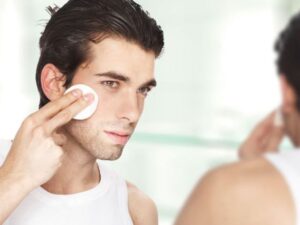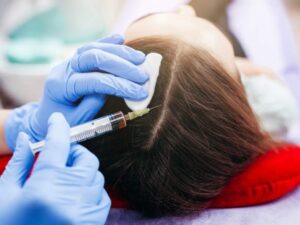Reproductive and genital health issues are generally not considered appropriate coffee table discussion topics. Many of us cannot place a finger on the origins of our mental blocks, except for an inherent sense of shame due to life-long social conditioning. Women tend to forge a strong sisterhood among trusted female friends, with whom they can discuss intimate issues like menstruation, infertility and menopause.
Most men may be comfortable with “gym locker talk” on women and masturbation. But sensitive topics like impotence, incontinence and male menopause are considered too embarrassing and painful to share, even with one’s closest pals. In popular media as well, there is a surprising dearth of information on male reproductive health. This blog hopes to shed some light on the common reproductive and genital health concerns affecting men, from infancy to old age.
Proper genital hygiene is the first step towards preventing various below-the-belt ailments. The penis, scrotal area and anus should be cleaned with water and a gentle soap at least once a day. No attempt should be made to try and clean the inside of the urethra, as this can cause injury and serious damage. Special care should be taken by uncircumcised men to clean the head of the penis (glans) and the inner side of the foreskin. Warm water is sufficient for this purpose. This area should be cleaned after sex, even if a condom has been used. The foreskin must be returned to its natural position after cleansing and drying. Do not apply after-shaves and deodorants directly to the genital area. Hand washing should be a part of genital hygiene after using the toilet, and should be taught to children.
The ritual and religious practice of circumcision has invited heated debate for decades, over its medical and anecdotal merits and demerits. It is medically proven that circumcision confers some protection against HIV and genital warts, though this does not negate the use of a condom. Circumcised men are also less likely to suffer from urinary tract infections and penile cancers. Though it reduces penile sensitivity, it can actually enhance sexual performance and satisfaction, by delaying premature ejaculation in young men. It is also the treatment of choice for balanitis (inflammation of the glans), and phimosis (a painful condition where the foreskin cannot be fully retracted from the penile head). The demerits include pain, psychological trauma, complications that are inherent to surgery (like bleeding and infection), and ethical questions on legal rights violation. When performed by a skilled surgeon or urologist, the side effects are almost nil. It is now agreed that the best time to perform a circumcision is soon after birth, preferably within the first 10 days of life. Newborns have high levels of stress-resistance hormones. Babies also tend to heal quickly, are more resilient, do not need stitches, and will not suffer from post-traumatic stress disorder (due to lack of recollection). The use of anesthesia makes the procedure painless and humane. Circumcision is more traumatic, disruptive and expensive for older boys.
I must mention here that the American Academy of Pediatricians (AAP) does not endorse the procedure as a way to prevent any of the medical conditions mentioned previously. The AAP also does not find sufficient evidence to medically recommend circumcision or argue against it. Clearly, there is a lack of consensus in the medical world as well.
Erectile Dysfunction (ED) is an embarrassing and emotionally distressing condition for the men suffering from it. ED is the inability of a man to maintain a firm erection long enough to have sex. Though it is extremely common in older men, ED can occur at any age. Most men will experience ED at some point or the other. But if it becomes a persistent problem, then it warrants medical treatment. ED can shatter a man’s self-confidence and break relationships.
The common causes of ED are medical illnesses like high blood pressure, heart and kidney disease, diabetes and obesity. Certain heart and sleep medications, alcohol and drug abuse, hormonal problems, surgeries or injuries to the spine or pelvis, anxiety, fatigue and conflict with the partner can also cause ED. When ED is caused by psychological factors, a man can obtain a full erection while he is asleep.
Exercise and medication can help restore sexual function for most men. Surgery may be recommended in some cases. Alternative or ‘herbal’ medications are strongly discouraged, as they can have serious side effects. Spanish fly for instance, can cause priaprism, which is painful and prolonged erection which can last several hours and can permanently damage penile tissue!
Infertility is another emotionally painful medical condition which affects several men. Most men remain in denial and refuse to seek help, as they find it too distressing to confide even with a physician. Male infertility is often caused by a low sperm count, or sperm which are deformed or immotile. It can also be caused by anatomical defects in the reproductive organs. Severe trauma or even a bad case of childhood mumps can leave you sterile. Typically couples are seen together when diagnosing infertility. Your doctor will take a detailed medical history, which includes your sexual habits. Blood tests may be ordered to rule out medical conditions, genetic abnormalities and to check testosterone levels. You will be asked to provide a semen sample for analysis. Treatments vary as per the underlying cause and the severity of impairment.
Testicular and Prostatic cancers are the most common cancers affecting the male reproductive organs. The testicles are located in the scrotum under the penis. A testicular self-examination is a helpful means to detect early cancers. It is best performed after a warm shower when the scrotal skin is relaxed. Gently feel your scrotal sac to locate a testicle. Hold it with one hand while firmly but gently rolling the fingers of the other hand over the entire surface of the testicle. Repeat the process with the other testicle. Feel the epididymis, a cord-like structure on the top and back of each testicle, noting any changes.
Each testicle must feel firm but not hard. Consult a surgeon or urologist if your testicle is enlarged, painful, or if you feel any lumps or swellings. The self-examination must be performed once a month if you are a young male with a family history of testicular cancer, or if you have an undescended testes (when the scrotal sac is empty on one or both sides).
The prostate is a walnut sized gland which is located under the bladder, and produces semen. It tends to grow larger with age. As it surrounds the urethra, an enlarged prostate can squeeze the urethra, causing urinary problems. These include
• A frequent and urgent need to pee
• Trouble starting a urine stream, despite the urgency
• Weak stream of urine or only small quantity of urine passed each time you go
• Feeling of incomplete voiding, even after you have finished urinating
• Frequent urination at night
• Leaking or dribbling of urine (incontinence)
• Small amounts of blood in urine.
Consult a urologist if you have any of these symptoms. He might suggest a biopsy and a pelvic scan. Routine screening can help in early detection, though it may not be mandatory unless there is a family history of prostatic cancer. Screening includes a digital rectal examination (where a doctor inserts a gloved and lubed finger into your rectum to feel your prostate). It also includes a blood test to detect high levels of PSA (Prostate Specific Antigen) which indicates cancer.
Urinary incontinence is defined as loss of bladder control, resulting in involuntary loss of urine. Besides an enlarged prostate, it can also be caused by prostate surgery and pelvic injuries which cause nerve damage. There are 3 common types of incontinence in men: stress incontinence, urge incontinence and overflow incontinence. Stress incontinence is the most common type, and occurs after a prostate surgery, due to weakening of pelvic muscles. You experience small amounts of bladder leakage when you cough or laugh. Urge incontinence is caused by abnormal bladder contractions due to nerve damage in the pelvis. You experience a strong uncontrolled urge to pee, along with a gush of urine at night, or on your way to the bathroom. Overflow incontinence occurs in men with enlarged prostate. Your bladder does not feel empty even after voiding urine, you have a poor urine stream and continue to ‘dribble’ after urinating.
Bladder retraining, medications and pelvic floor exercises (Kegel exercise) can help strengthen the pelvic muscles. External devices like a penile clamp can be helpful. Occasionally an artificial urinary sphincter may be surgically implanted, to make you more continent. In the meantime, you can use absorbent adult diapers which offer features like odor protection and faster absorption.
I would like to end with a brief note on a lesser known condition called Male Menopause. Ageing men have lower levels of blood testosterone, which can cause symptoms like fatigue, depression, irritability and lack of libido. Unlike female menopause which represents a well-defined period in which hormone production stops completely, testosterone decline in men is a slower process. Testosterone replacement therapy can help relieve the symptoms, but it is not without any side effects. As always, an understanding partner can make a world of a difference. So can exercise, a healthy diet and mild antidepressants.
I hope this blog will be read with interest by both men and women. It is important for men to understand what is happening to their bodies, especially as they age. An educated and informed woman can encourage her man to seek help when needed, by being sympathetic and communicative.




